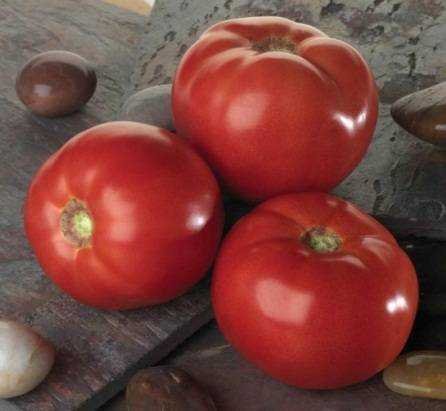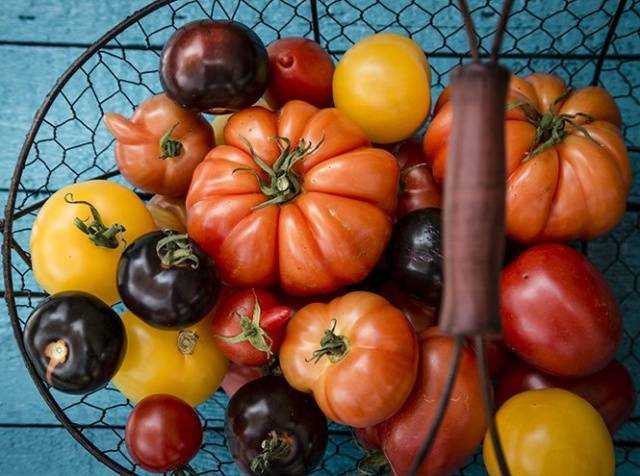- Overview of Dutch Tomatoes
- Advantages of Dutch Tomatoes
- Dutch Tomato Growing Methods
- Importance of Tomato Hybrids
- High-Growing Hybrids
- Low-Growing Hybrids
- 1. Tumbling Tom Red
- 2. Tiny Tim
- 3. Totem
- 4. Patio Princess
- 5. Early Cascade
- 6. Micro Tom
- Benefits of Dutch Tomato Hybrids
- 1. High Yield
- 2. Disease Resistance
- 3. Extended Shelf Life
- 4. Consistent Quality
- 5. Flavorful Taste
- 6. Choice of Growing Methods
- 7. Variety of Colors and Shapes
- Top 11 Delicious Hybrids
- “Question-Answer”
- What are the benefits of growing Dutch tomatoes?
- What are some popular high-growing hybrid tomatoes?
- Are there any low-growing hybrid tomatoes?
- What is the best way to care for Dutch tomatoes?
- What are some low-maintenance hybrid tomatoes?
- What are some of the most flavorful Dutch tomatoes?
- Can Dutch tomatoes be grown in a greenhouse?
- “Video” Best Tomato to Grow in YOUR Zone
Grown for centuries, tomatoes have become an integral part of our diet, offering us a burst of flavors in countless recipes. And among the most sought after variations are the Dutch tomato hybrids. Renowned for their exceptional taste, texture, and versatility, these tomatoes are a favorite among chefs and home cooks alike.
One of the key advantages of Dutch tomato hybrids is their ability to grow to impressive heights. These high-growing varieties not only produce a larger yield but also enhance the aesthetic appeal of any garden or greenhouse. From juicy beefsteaks to cherry tomatoes bursting with sweetness, the options are endless.
Alternatively, if space is a constraint, the low-growing hybrids of Dutch tomatoes provide a perfect solution. These compact plants are ideal for small gardens or balconies, requiring minimal maintenance while still producing an abundance of delicious and vibrant tomatoes. Their shorter stature also makes managing and harvesting the fruits a breeze.
Get ready to tantalize your taste buds with an array of mouth-watering Dutch tomato hybrids that promise to elevate your culinary experience to new heights. Whether you’re a seasoned gardener or a tomato enthusiast, there’s a variety for everyone. Let’s explore the top 11 delectable high-growing and low-growing hybrids of Dutch tomatoes.
Overview of Dutch Tomatoes
Dutch tomatoes are known worldwide for their exceptional quality, taste, and unique growing methods. The Netherlands has established itself as a leading producer of high-quality tomatoes, thanks to advanced agricultural techniques, sustainable farming practices, and a favorable climate.
The Dutch tomato industry dates back several centuries, with tomato cultivation gaining popularity in the late 19th century. Today, Dutch farmers produce a wide variety of tomato hybrids, each with its own distinct characteristics and uses.
Advantages of Dutch Tomatoes
- Flavor: Dutch tomatoes are renowned for their delicious flavor, which is a result of careful breeding and cultivation techniques.
- Consistency: Due to the controlled greenhouse environment, Dutch tomatoes exhibit consistent quality and appearance throughout the year.
- Long shelf life: Dutch tomatoes are bred to have a longer shelf life, allowing them to be stored and transported without compromising their taste and quality.
- Reduced pesticide use: Dutch tomato growers employ integrated pest management techniques, which minimize the need for chemical pesticides and promote environmentally-friendly farming practices.
- Wide range of varieties: Dutch farmers produce an extensive range of tomato hybrids, including both high-growing and low-growing varieties with diverse shapes, sizes, and colors.
Dutch Tomato Growing Methods
Dutch tomato growers utilize advanced agricultural techniques and innovative technologies to achieve optimal plant growth and yield. These methods include:
- Climate control: Greenhouse cultivation allows for precise control over temperature, humidity, and lighting conditions, creating an ideal environment for tomato plants to thrive.
- Hydroponics: Many Dutch tomato farmers use hydroponic systems, where plants are grown in nutrient-rich water solutions instead of soil. This method enables better nutrient uptake and water conservation.
- Biological pest control: Dutch farmers utilize biological pest control methods, such as introducing predator insects, to manage pests and reduce the need for chemical pesticides.
- Grafting: Grafting is a commonly used technique in Dutch tomato cultivation, where the top part (scion) of a desirable tomato variety is attached to the rootstock of a hardier variety. This practice improves disease resistance and overall plant vigor.
With their exceptional taste, quality, and sustainable growing practices, Dutch tomatoes have become a favorite choice for consumers, chefs, and food enthusiasts worldwide. Whether it’s in salads, sandwiches, or sauces, Dutch tomatoes offer a delicious and versatile ingredient for a wide range of culinary creations.
Importance of Tomato Hybrids
Tomatoes are one of the most popular and widely consumed vegetables around the world. They are not only delicious but also packed with essential nutrients and health benefits. With advancements in technology, tomato hybrids have become increasingly important in the agricultural industry. Here are a few reasons why tomato hybrids are significant:
- Improved Disease Resistance: Tomato hybrids are bred to be more resistant to various diseases, pests, and environmental stresses. This is essential for ensuring higher crop yields and reducing the need for chemical pesticides.
- Extended Shelf Life: Many tomato hybrids have an extended shelf life compared to their traditional counterparts. This allows farmers and retailers to transport and store the tomatoes for longer periods without compromising their quality.
- Higher Yields: By using tomato hybrids, farmers can achieve higher crop yields in terms of quantity and quality. Hybrids are specifically bred to produce more tomatoes per plant, resulting in increased productivity and profitability.
- Better Flavor: Tomato hybrids are also developed to enhance the flavor profile of the fruit. They are carefully selected and bred to ensure a perfect balance of sweetness and acidity, resulting in a more delicious and enjoyable eating experience.
- Adaptability: Tomato hybrids are bred to adapt to different growing conditions, including temperature, humidity, and soil types. This allows farmers to cultivate tomatoes in regions where traditional varieties may struggle to thrive.
- Consistency: Tomato hybrids offer consistent characteristics, such as size, shape, and color, which are important for meeting market demands and consumer preferences. This ensures that there is a reliable supply of tomatoes with consistent quality throughout the year.
- Increased Nutritional Value: Some tomato hybrids are bred to have higher levels of specific nutrients, such as vitamins and antioxidants. This makes them even more beneficial for maintaining a healthy diet and preventing various diseases.
In conclusion, tomato hybrids play a crucial role in modern agriculture by offering improved disease resistance, extended shelf life, higher yields, better flavor, adaptability to different conditions, consistency, and increased nutritional value. These factors make tomato hybrids an essential choice for both farmers and consumers alike.
High-Growing Hybrids
High-growing hybrids of Dutch tomatoes are known for their tall stems and ability to reach impressive heights. These varieties are commonly used in commercial tomato farming due to their yield potential and disease resistance. Below, we have listed some of the top high-growing hybrids:
Beefsteak F1
Beefsteak F1 is a high-growing hybrid known for its large, meaty fruits. The tomatoes have a rich, sweet flavor and are ideal for slicing and grilling.
Cluster F1
Cluster F1 is a high-growing hybrid that produces clusters of small to medium-sized tomatoes. This variety is known for its high yield and disease resistance.
Cocktail F1
Cocktail F1 is a high-growing hybrid with small, bite-sized tomatoes. These tomatoes are perfect for salads and snacking.
Gourmet F1
Gourmet F1 is a high-growing hybrid with medium-sized fruits. The tomatoes have a sweet and juicy flavor, making them great for fresh eating.
Heirloom F1
Heirloom F1 is a high-growing hybrid that combines the characteristics of heirloom tomatoes with the productivity and disease resistance of modern hybrids.
These high-growing hybrids offer a range of flavors, sizes, and textures, making them suitable for various culinary uses. Whether you prefer large, juicy tomatoes or small, sweet ones, there is a high-growing hybrid that will meet your preferences. Consider planting these high-performing varieties in your garden or greenhouse for a bountiful tomato harvest.
Low-Growing Hybrids
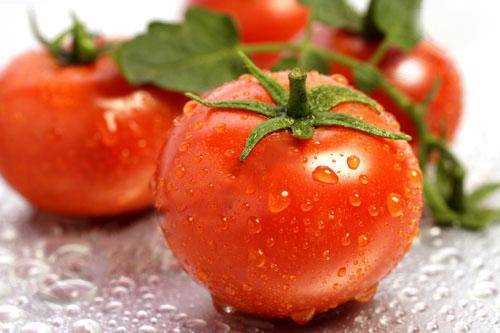
1. Tumbling Tom Red
The Tumbling Tom Red tomato is a popular low-growing hybrid variety that produces an abundance of delicious cherry-sized tomatoes. This variety is perfect for container gardening or hanging baskets, as its cascading growth habit allows it to trail down and create a stunning display.
2. Tiny Tim
The Tiny Tim tomato is a compact and low-growing hybrid that is ideal for small gardens or patio containers. Despite its small size, this tomato variety produces an impressive yield of sweet and flavorful tomatoes. Its dwarf habit also makes it easier to manage and maintain.
3. Totem
The Totem tomato is a determinate, bushy variety that stays compact and requires minimal staking. This low-growing hybrid produces a high yield of medium-sized tomatoes with a rich, tangy flavor. It is an excellent choice for small spaces or patio gardens.
4. Patio Princess
The Patio Princess tomato is a low-growing hybrid variety that is perfect for growing in containers or small gardens. It produces abundant clusters of medium-sized, flavorful tomatoes. This patio tomato has a compact, bushy habit and requires minimal staking or caging.
5. Early Cascade

The Early Cascade tomato is a low-growing hybrid that is known for its early maturity and high productivity. It produces an abundance of medium-sized, juicy tomatoes with a deliciously sweet flavor. This variety is perfect for hanging baskets or containers.
6. Micro Tom

The Micro Tom tomato is the world’s smallest tomato plant, reaching a height of only 6-8 inches. Despite its tiny size, it produces a decent yield of flavorful cherry tomatoes. This low-growing hybrid is great for indoor gardening, as it can be grown in small pots or even on a sunny windowsill.
Benefits of Dutch Tomato Hybrids
There are several benefits to growing and consuming Dutch tomato hybrids. These varieties have been carefully developed through cross-breeding techniques to produce tomatoes that offer numerous advantages over traditional tomato varieties.
1. High Yield
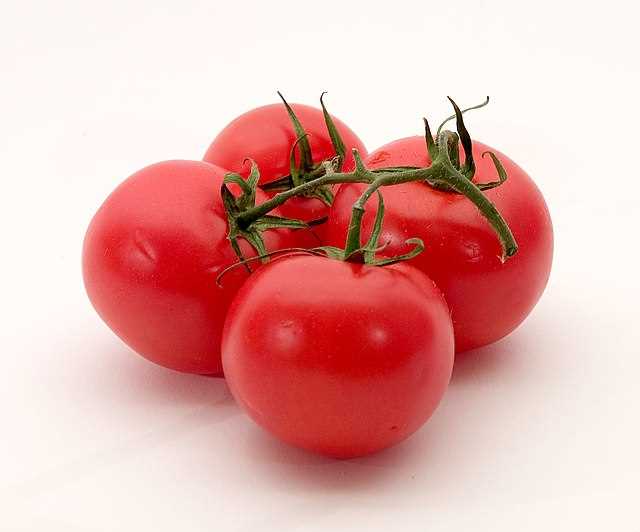
Dutch tomato hybrids are known for their high yield. These plants have been bred to produce a larger number of tomatoes per plant, allowing growers to harvest more tomatoes from a smaller area. This makes them an ideal option for commercial growers looking to maximize their crop production.
2. Disease Resistance
Dutch tomato hybrids often exhibit superior disease resistance compared to traditional tomato varieties. Through careful selection and cross-breeding, these hybrids have been created to be resistant to various diseases, such as tomato blight and wilt. This reduces the need for chemical pesticides and fungicides, making them a more environmentally-friendly choice.
3. Extended Shelf Life
One of the key benefits of Dutch tomato hybrids is their extended shelf life. These tomatoes are bred to be more durable and have a longer shelf life than many traditional varieties. This means that they can stay fresh for a longer period of time, reducing waste and ensuring that consumers can enjoy them for a longer period.
4. Consistent Quality
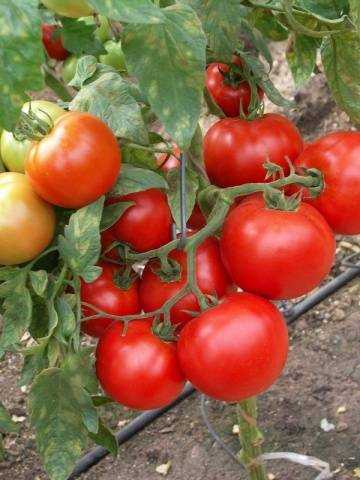
Dutch tomato hybrids are known for their consistent quality. They have been specifically bred to have a uniform size, shape, and taste, ensuring that consumers can expect the same level of quality with each tomato they purchase. This makes them a popular choice for restaurants and other food service establishments.
5. Flavorful Taste
Despite their focus on consistency, Dutch tomato hybrids also offer a flavorful taste. These tomatoes have been bred to have a balanced and enjoyable flavor profile, making them a favorite among tomato enthusiasts and chefs alike.
6. Choice of Growing Methods
Dutch tomato hybrids can be grown using various methods, including hydroponics and greenhouse cultivation. This allows growers to choose the method that best suits their needs and resources. The versatility of these hybrids makes them a popular choice for both small-scale and large-scale tomato cultivation.
7. Variety of Colors and Shapes
Dutch tomato hybrids are available in a wide range of colors and shapes. In addition to the classic red tomatoes, there are also varieties that produce yellow, orange, green, and even purple tomatoes. This adds visual interest to dishes and provides options for creative culinary presentations.
Overall, Dutch tomato hybrids offer numerous benefits to growers and consumers alike. From their high yield and disease resistance to their extended shelf life and flavorful taste, these hybrids are a popular choice for those looking to enjoy the best of what tomatoes have to offer.
Top 11 Delicious Hybrids
1. Dutch Beefsteak: This hybrid tomato offers a rich, meaty flavor that is perfect for sandwiches and burgers. It’s one of the most popular hybrids in Dutch cuisine.
2. Golden Sunrise: Known for its vibrant yellow color, Golden Sunrise tomatoes have a sweet and tangy flavor. They are excellent for salads and fresh eating.
3. Sweet Million: As the name suggests, Sweet Million tomatoes are incredibly sweet and perfect for snacking. They are small in size, making them an ideal addition to salads and appetizers.
4. Black Cherry: These small, dark tomatoes pack a punch with their rich and smoky flavor. They are great for adding depth to salads and salsas.
5. Green Zebra: Green Zebra tomatoes have a unique and tangy taste with a hint of sweetness. They are a stunning addition to salads and can also be used for pickling.
6. Pink Bumble Bee: With a beautiful pink color and sweet flavor, Pink Bumble Bee tomatoes are a delight to eat. They are perfect for snacking and adding to charcuterie boards.
7. Chocolate Stripes: These tomatoes have a deep, chocolate-brown color and a complex, sweet flavor. They are often used in salads, salsas, and sauces.
8. Orange Paruche: Orange Paruche tomatoes are juicy and sweet with a hint of acidity. They are a great choice for making tomato sauces and pastes.
9. Lemon Boy: With their bright yellow color and mild flavor, Lemon Boy tomatoes are perfect for adding a pop of color and taste to salads and sandwiches.
10. Black Krim: These tomatoes have a unique combination of sweet and smoky flavors. They are excellent for slicing and adding to sandwiches and burgers.
11. Purple Russian: Purple Russian tomatoes have a rich and complex flavor with a slightly sweet taste. They are great for slicing and adding to salads or roasting.
These top 11 delicious hybrids offer a wide range of flavors and colors that will elevate your culinary creations. Whether you’re looking for a sweet and tangy tomato for snacking or a rich and meaty one for sandwiches, you’re sure to find a favorite among these Dutch varieties.
“Question-Answer”
What are the benefits of growing Dutch tomatoes?
Growing Dutch tomatoes has several benefits. They are known for their exceptional taste, high quality, and long shelf life. They are also resistant to diseases and pests, making them easier to grow. Additionally, Dutch tomatoes are known for their high yields, which make them ideal for commercial production.
What are some popular high-growing hybrid tomatoes?
Some popular high-growing hybrid tomatoes include Sweet Million, Sungold, and Big Beef. These tomatoes are known for their vigorous growth and high yield. They also have excellent taste and are perfect for salads, sandwiches, and salsas.
Are there any low-growing hybrid tomatoes?
Yes, there are several low-growing hybrid tomatoes available. These varieties are perfect for container gardening or small spaces. Some popular low-growing hybrids include Tiny Tim, Tiny Tim Red, and Totem. These compact plants produce an abundance of small, flavorful tomatoes.
What is the best way to care for Dutch tomatoes?
The best way to care for Dutch tomatoes is to provide them with adequate sunlight, water, and nutrients. They should be planted in well-drained soil and watered regularly, taking care not to overwater. Pruning and staking the plants can also help promote healthy growth. Additionally, using organic fertilizers and regularly checking for pests or diseases can ensure the plants stay healthy.
What are some low-maintenance hybrid tomatoes?
There are several low-maintenance hybrid tomatoes available. These varieties require less care and attention compared to other types of tomatoes. Some examples include Celebrity, Mountain Merit, and Cherokee Purple. These tomatoes have good disease resistance and can tolerate various climate conditions.
What are some of the most flavorful Dutch tomatoes?
There are many flavorful Dutch tomatoes to choose from. Some of the most popular ones include Brandywine, Black Krim, and Cherokee Purple. These tomatoes have a rich, sweet taste and are perfect for making sauces or enjoying fresh in salads.
Can Dutch tomatoes be grown in a greenhouse?
Yes, Dutch tomatoes are often grown in greenhouses. Greenhouse cultivation provides a controlled environment, allowing for year-round production and protection against pests and diseases. The use of advanced technology, such as artificial lighting and climate control, helps optimize the growth and yield of Dutch tomatoes in greenhouses.
